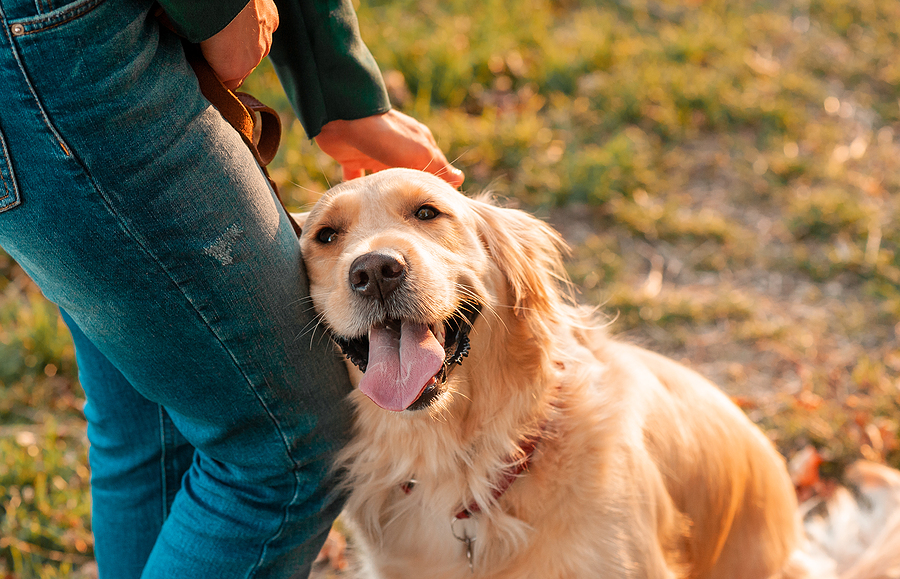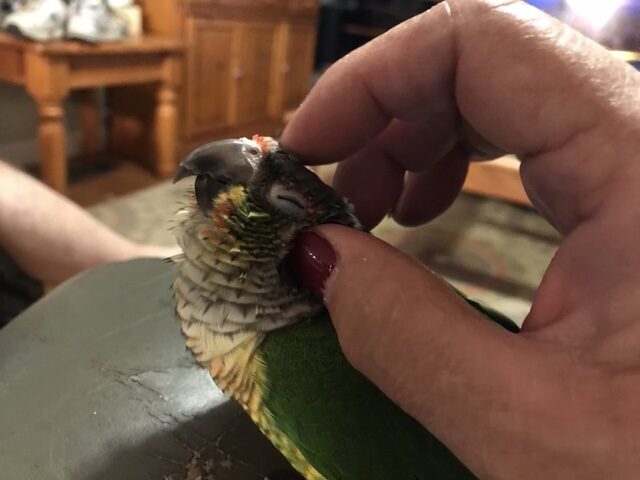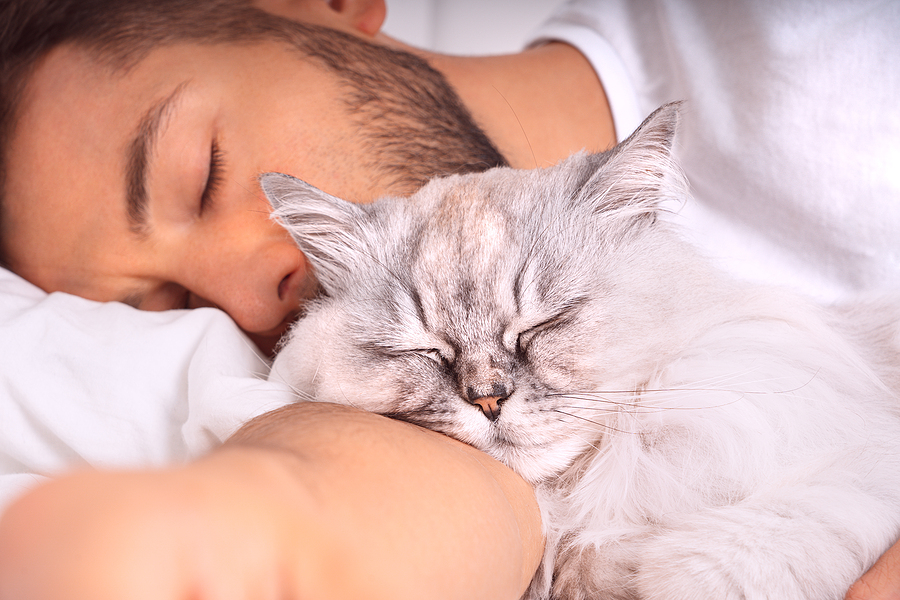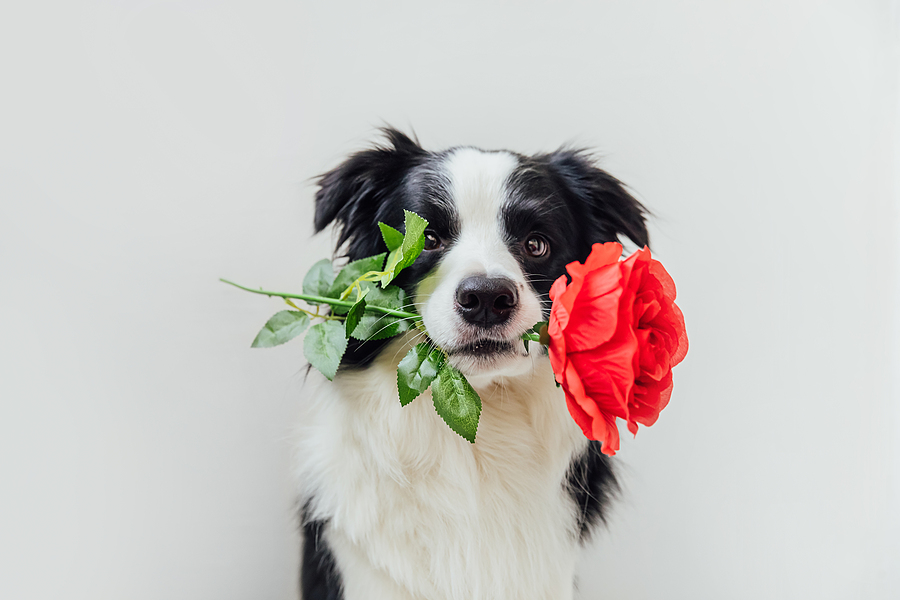Do our pets love us? Those of us who live with them are sure that the answer is yes, and we believe it’s not just because we feed them.
How can we really know? A number of cognition researchers study animals—in particular, dogs—in non-invasive ways to learn more about how the brain works. Among their discoveries is that the canine brain is wired to build bonds with other species, including humans. You may have experienced this when your dog adopts a kitten or a lost baby squirrel and cares for them as if they were her own.
Other researchers have studied the social lives of cats, looking at such things as the ways they recognize their people, how they communicate between themselves, and whether they prefer being with people to rewards such as food or toys. (Spoiler: people win.) A study of attachment in kittens published in 2019 in “Current Biology” found that kittens show a similar ability to form secure attachments toward humans as children and dogs, with those attachments remaining in adulthood.
Cognitive ornithology—the study of bird brains—is still in its infancy, but some families, such as corvids (crows, ravens, and jays) and parrots, appear to have superior cognitive abilities compared to other birds and their brains function similarly to those of mammals, even though their brain anatomy is different. That includes similarities in emotions, so if cats, dogs, and humans display affection, there’s no reason to think that birds, especially our hookbill friends with whom so many of us share our lives, are any different.
From looking at levels of oxytocin (nicknamed the “love hormone” because it plays a key role in bonding) to fMRI brain scans to genes for sociability, research backs up the idea that the human-animal bond is real.
Cats, dogs, and birds all have unique ways of expressing their affection, using body language, vocalizations, and touch, to name just a few of their methods of animal-to-human sweet talk.
The Eyes Have It
You’ve probably heard the saying “The eyes are the window to the soul.” It has been attributed to Leonardo da Vinci and William Shakespeare, but the concept that the eyes gives us a glimpse into the soul has been around since at least the time of the Romans and has appeared in numerous cultures. Fear Free lead trainer Mikkel Becker sees love in the eyes of her dog Indiana Bones. “He rests his head on my lap and looks up at me like he just can’t get enough of me,” she writes in an email. “Or he’ll sit on my lap and look adoringly up at me with a level of love that’s unconditional and unparalleled by anyone else.”
We can see love in our pets’ eyes when they are relaxed. Dogs may squint a little, so that their eyes appear almond-shaped, with little or no white showing, giving them a soft expression.
Cats have a similar “tell.” When they express affection through their eyes, they also squint a bit, displaying a peaceful expression. Sometimes cats blink slowly at us, giving what are called eye kisses. These cats feel cozy, calm, and comfortable in our presence. You can “kiss” them back the same way.
Parrots show their love for and trust in us by closing their eyes. When they’re comfortable enough to sleep around us, we can know that they view us as a member of their flock and feel safe in our presence.
The Power of Touch
When they love us, our pets want to be close to us. For some, that means flopping down in our lap, even if they’re so huge that only their head fits. (Lap Mastiff, anyone?)
Others are satisfied to lie or stand next to us. They reach out a paw and place it in our hand, rest their head on our feet, or lean up against us.

Cats have an additional reason for wanting to touch us. They are secretly marking us as their own with facial scent glands that go unnoticed by us but deliver the timeless Valentine message “Be mine.” They’re doing the same thing when they wend between our legs, bumping up against us. They don’t want to trip us (unless maybe we’re carrying food), just declare their love.
Our psittacine buddies give friendly nibbles or love bites or “taste” us with their tongue. Some enjoy snuggling with us, cuddling up beneath our chin or in our arms. They may lower their head for a nice scratch.
Cats, dogs, and birds all have unique ways of expressing their affection, using body language, vocalizations, scent, and touch, to name just a few of their methods of animal-to-human sweet talk.

Togetherness Rocks
Many of our furry friends greet us when we arrive home, want to go with us when we leave, or follow us everywhere in the house, including to the bathroom. Even when we have just woken up, they’re excited to start a new day with us. We’re members of their family, after all.
“Otis greets me in the morning as if I’m a soldier returning from deployment,” Becker says. “He’s soooooo thrilled, and it’s like I’m all that matters to him in the world when he runs out from my daughter’s room to jump in the air on cue, fly into my arms, and proceed to smother me in slurpy kisses.”
In her younger years, my dog Harper would snuggle up next to me in the morning, lying on her back while I gave her belly rubs. Now, at the advanced age of 14, she’s not allowed to sleep on the bed anymore, as I don’t want to run the risk of her falling or jumping off in the night, but she comes to my side of the bed and sneezes at me until I wake up and reach down to pet her.
Sally Bahner’s Russian Blue cat, Sofiya, lies on top of Bahner in the morning for a petting session before they start their day. “She kisses me when I stop, wanting more,” Bahner says.
Lilu and Lucy, who rule the Williams household, each have special ways of expressing affection. “Lilu walks me to the bedroom and wants me to sit with her and bump heads,” says Katherine Williams. “Lucy is a lap and purr kitty. She especially likes to join me on the yoga mat, particularly in savasana.”
Our feathered buddies also express affection by seeking our attention on their own or greeting us with an excited call when we come home. Often, when I was working in my home office, I would suddenly realize that my African ringneck parakeet, Larry (the) Bird, was sounding awfully loud. I would swivel around in my chair to find that Larry had made his way from the living room to my office and was demanding some shoulder time. Other birds want scratches, kisses or cuddles first thing in the morning.
Gifts Are Nice
Our significant others may bring flowers or candy for Valentine’s Day, but pets bring more…unique…offerings. Some dogs and cats bring toys to us while we’re working or relaxing, a clear hint that they’d like to spend some quality time with us.
Cats, of course, are known for their gifts of prey: mice, rats, locusts and other fine feline foods, delivered right to our bed for a pre-breakfast snack, or to the kitchen, maybe in the hope that we’ll prepare something special with them.
Shake Your Moneymaker
When dogs are happy to see us, we know it. They shiver with happiness, their hind ends wiggle and waggle, and those tails are going gangbusters.
An interesting finding from a study published in “Current Biology” in 2007 tells us that dogs wag their tails to the right when they see a familiar person and to the left when they’re stressed or uncertain. The family pets participating in the study were shown their owner, an unknown person, an unfamiliar dog, and a cat. Tail positions and activity were determined from video recordings of the dogs’ responses.
The reason the tail wags to the right when dogs are happy is because the left side of the brain controls what happens on the right side of the body and vice versa. The left side of the brain is associated with positive feelings, so it makes sense that dogs wag to the right when they see someone they know and like.
Cats don’t wag their tails in the same ways as dogs, but they do use their tails to express happiness or affection. Look for a tail that is straight up, gently wafting from side to side, or wrapped around your leg as if giving a hug. (Beware the cat whose tail is rapidly swishing back and forth like that of a happy dog; that cat is an unhappy camper indeed. Back off.)
Birds talk to us with their tails, too. They wag or flip their tails to express happiness. When she’s happy to see you, your bird may briefly fluff up while wagging her tail. Think of it as an avian “giggle.”
The Voice
It’s said that love without conversation is impossible, so it’s no wonder we talk to our pets. Even if they can’t respond in words, their vocalizations can tell us how they feel. Dogs may “woo woo” when they’re happy or excited to see us. And they listen intently: an important part of the two-way street that is conversation. Writer Christopher Morley once said, “No one appreciates the very special genius of your conversation as the dog does.”
Cats purr, of course, although that vocalization can have meanings beyond satisfaction or happiness. Many cats also do their best to carry on a conversation in meows with us, chatting about their day and asking about ours.
Ellen Dupuy says, “When I raise the garage door to drive in, it alerts them, and they are both waiting for me when I open the kitchen door to come in. They meow as if asking ‘Where you been?’”
But birds. Some of them can actually speak to us. Besides singing, chattering, and whistling, they make kissy sounds or say “I love you” if that’s something they’ve learned. They combine words with actions: gently preening us while they talk; whispering “Hi” before requesting head scratches; or nibbling our fingers while saying “Gentle.” One bird’s owner reported that if she tripped or dropped something, her bird would ask “Are you okay?”
No matter which type of pet we’re talking to, our brains are responding with physical and emotional changes that produce “feel-good” levels of dopamine, oxytocin, endorphins, and other biochemicals that give a sense of wellbeing. Those neurochemical reactions help to shape our relationships with our companion animals by allowing us to express our inner thoughts and feelings to a non-judgmental friend and partner.
Up Close and Personal
Most people have the expectation of privacy in the bathroom, but not those of us who live with dogs or cats. They march right in after us, push open doors that aren’t closed all the way, and bark or paw at doors that are closed. Every pet owner is familiar with the sight of a paw reaching beneath the door in a vain attempt to gain access so they can supervise our grooming rituals and other activities.
Some people report that when they’re vulnerable—in other words, sitting on the toilet—their cats take the opportunity to jump into their lap for some petting. Dogs have been known to invade showers and bathtubs for a shared bathing experience. Birds don’t mind joining us in the shower, either; depending on the species, it may bring to mind ancestral memories of their rainforest or jungle heritage.
Some pets like to hold our hand, grasping it as best they can or placing their paw in it. And while dogs and cats don’t always enjoy receiving hugs, many of them are happy to give them.
“Cider wants to give me hugs, never mind dogs’ arms don’t work that way,” says Lis Carey, who lives with a Chinese Crested. “She does her best, with her tail wagging mightily, and a big, happy grin.”
Cats will groom us, licking our skin with their rough tongue or reaching out to pat our hair with a paw. Known as social grooming, it’s a common way that animals bond and build relationships with each other and with us. Parrots, for instance, not only preen their feathers, they also preen our hair.
“If they are doing a specific behavior to reach out, to touch you with their beak or want to groom the little mole on your finger or preen your hair, it’s a modification of preening and grooming one of their own conspecifics,” says Brian Speer, DVM, a board-certified avian specialist and owner and director of the Medical Center for Birds in Oakley, California. “Allopreening and verbal and nonverbal social displays and communications are uniform across all bird species and others as well.”

Other pets express their desire to be with us at bedtime. They want their heads on the pillow or their bodies under the covers. Some, working as a team, sandwich our body between them so we can’t move. Or they sleep with their head at the end of the bed, hind end in our face. So they can see any dangers approaching and do a better job of guarding us, of course! Now that’s true love.
This article was reviewed/edited by board-certified veterinary behaviorist Dr. Kenneth Martin and/or veterinary technician specialist in behavior Debbie Martin, LVT.








